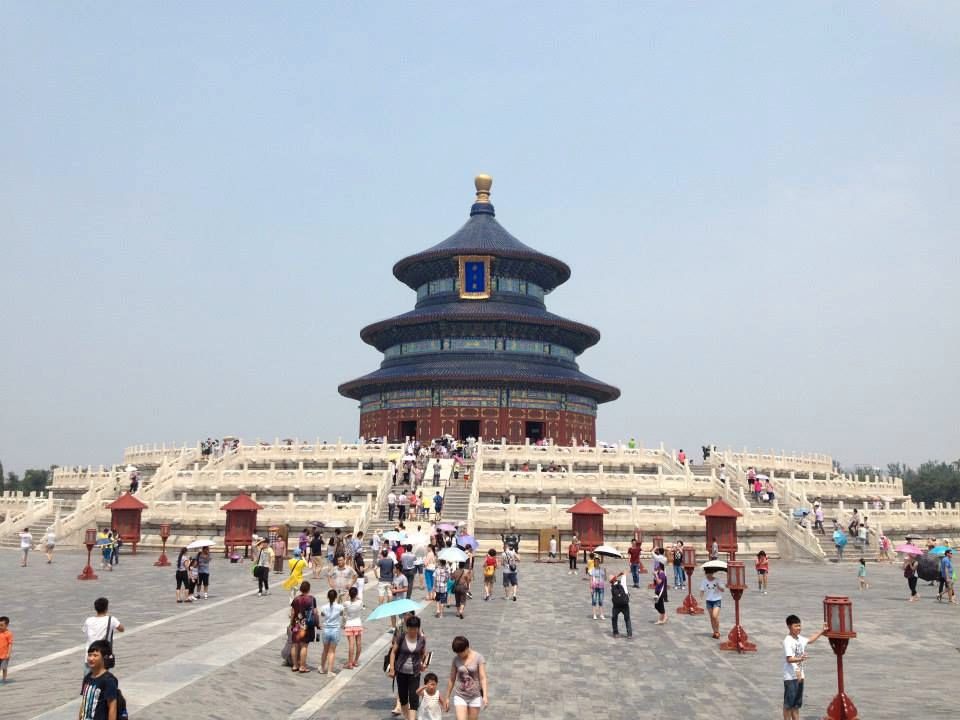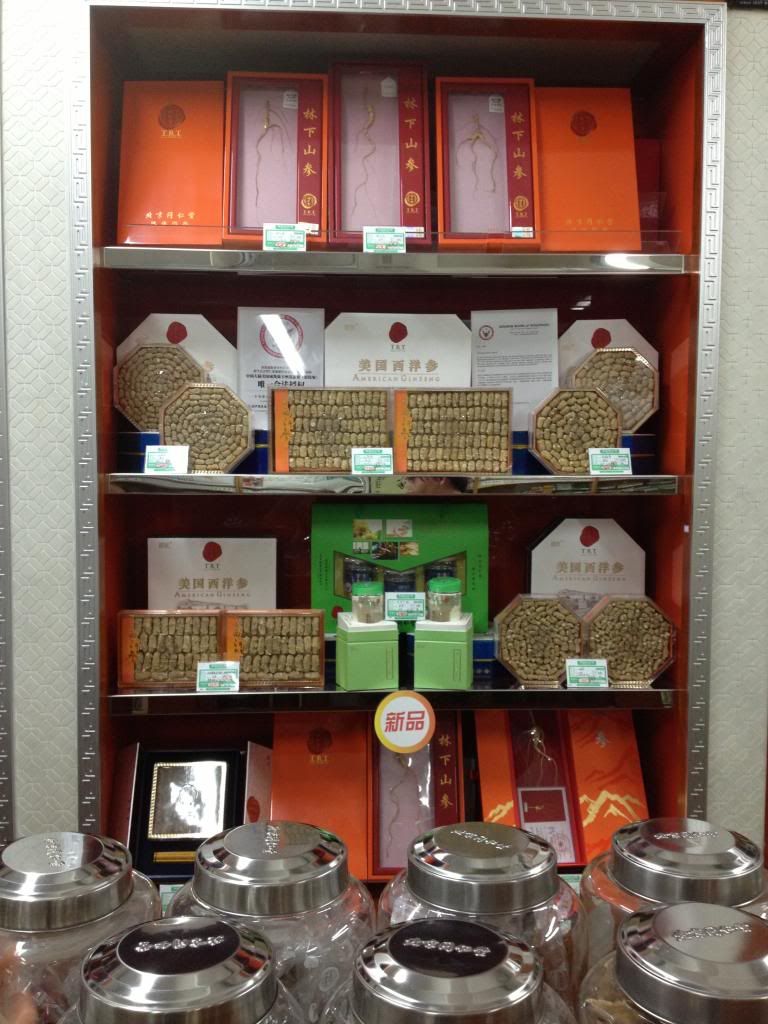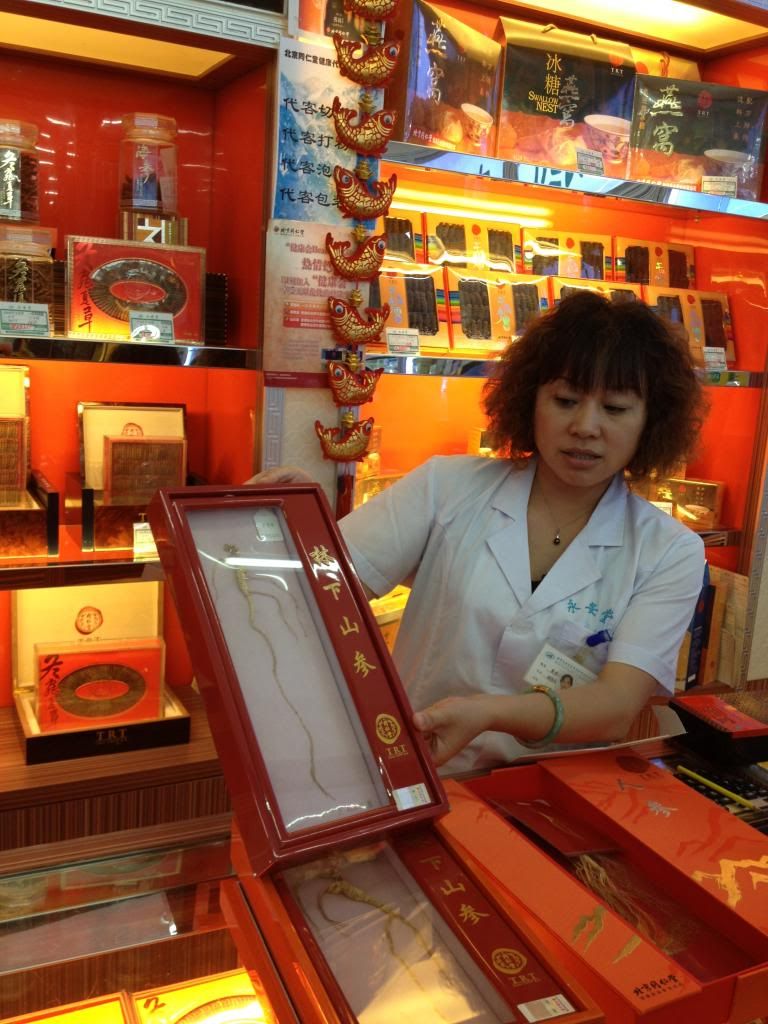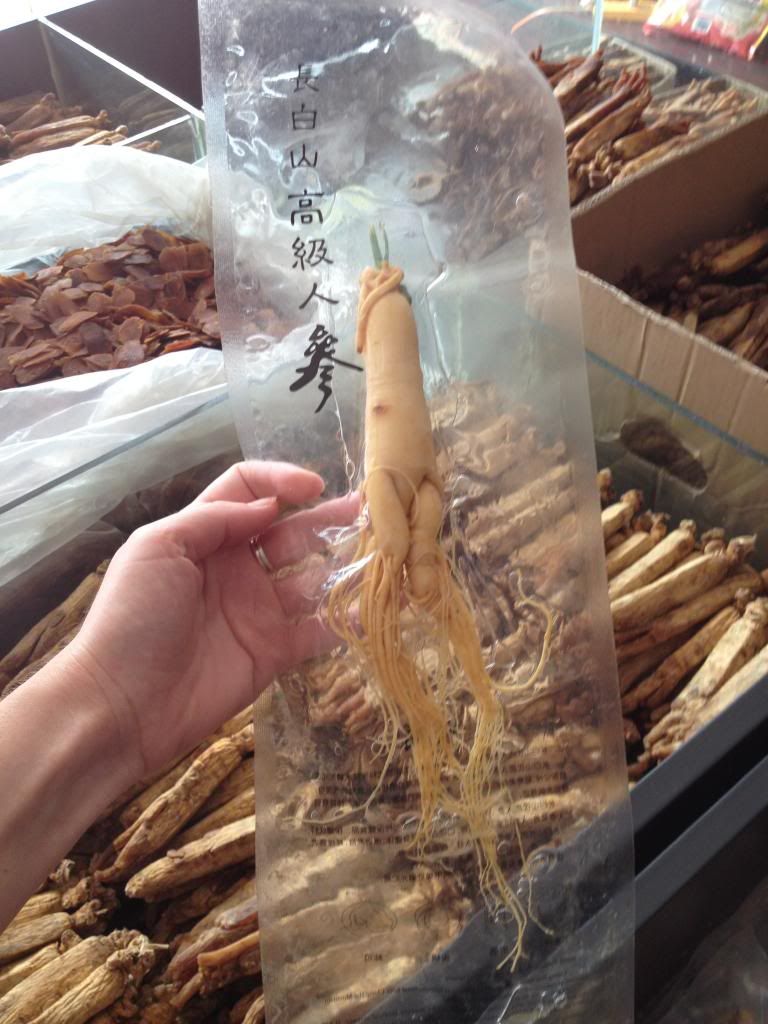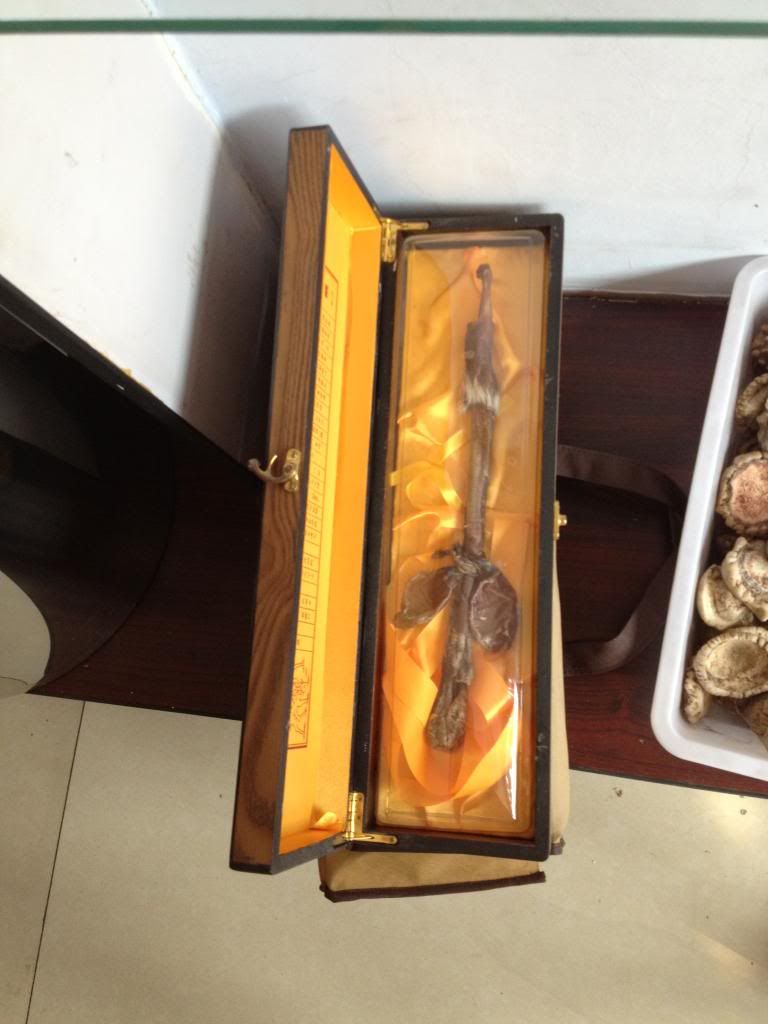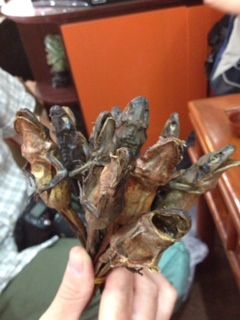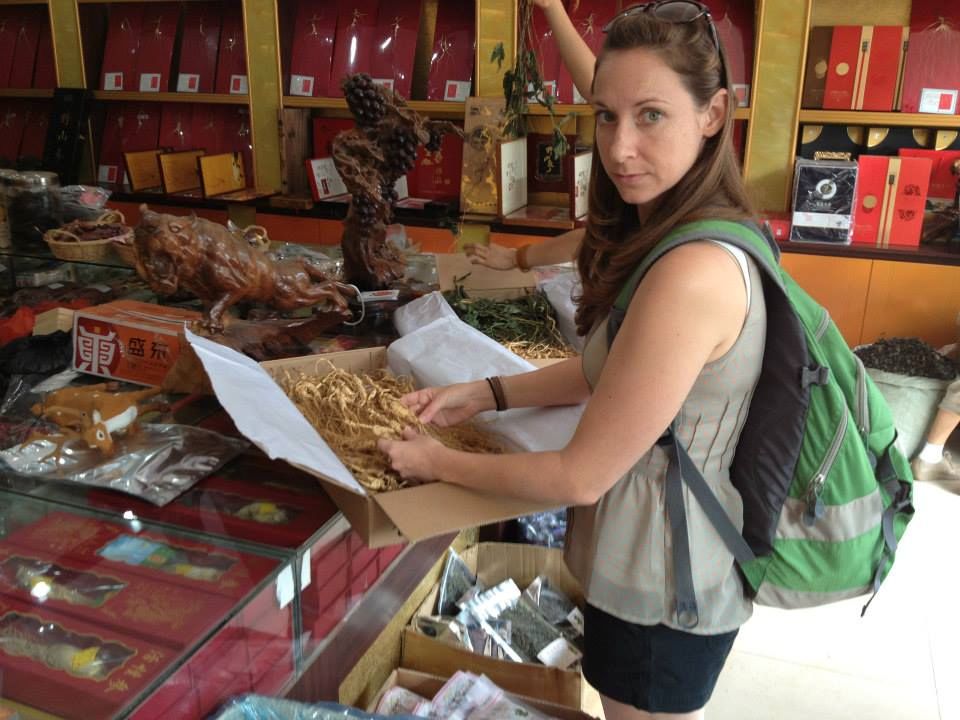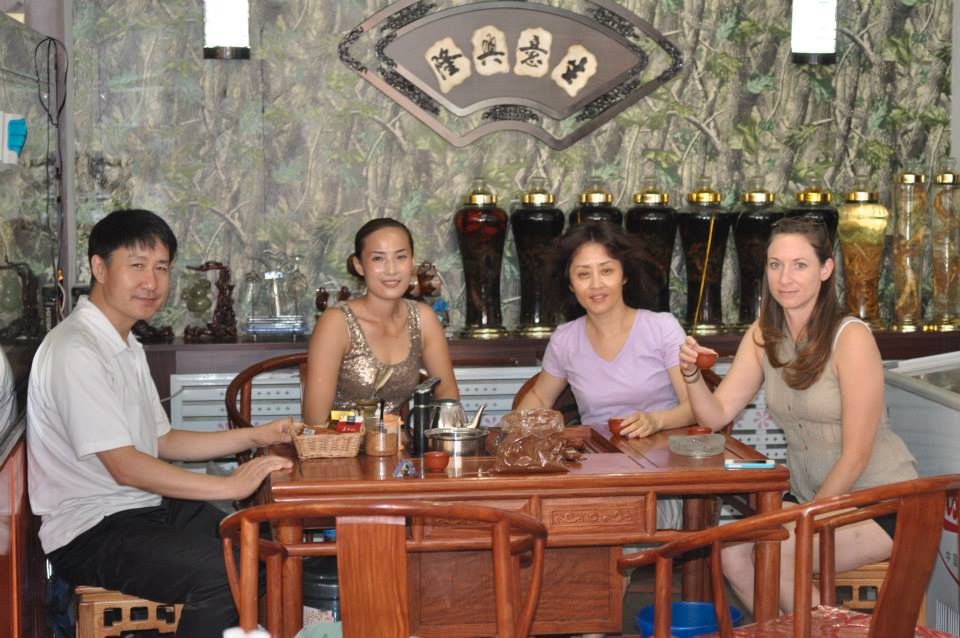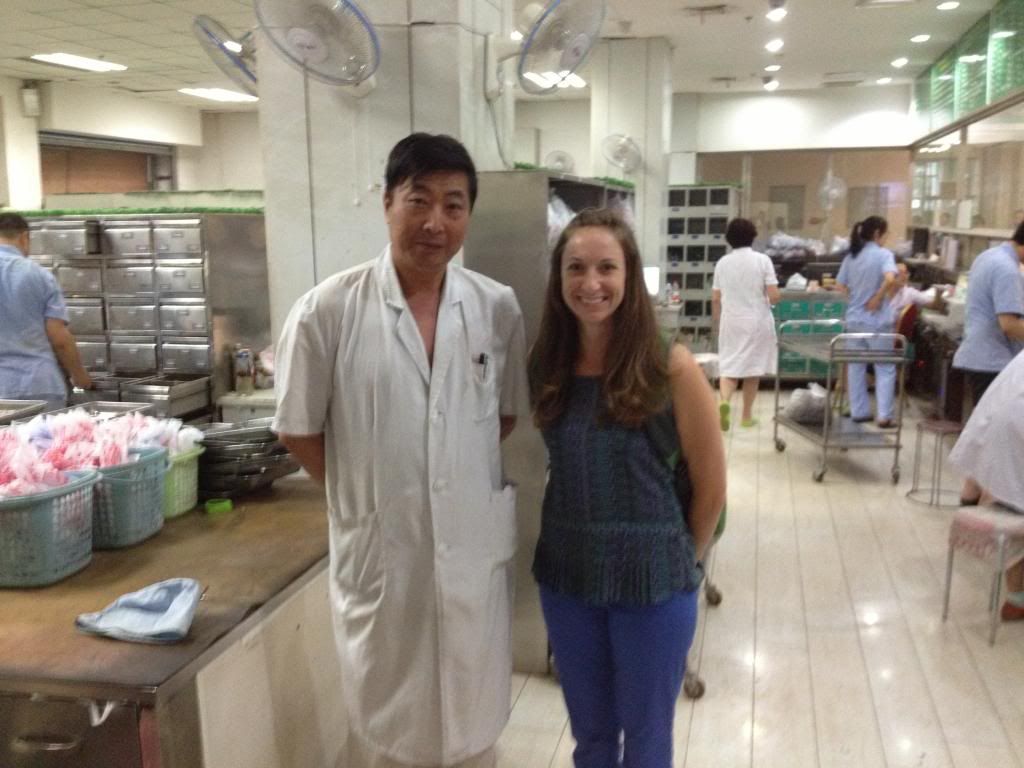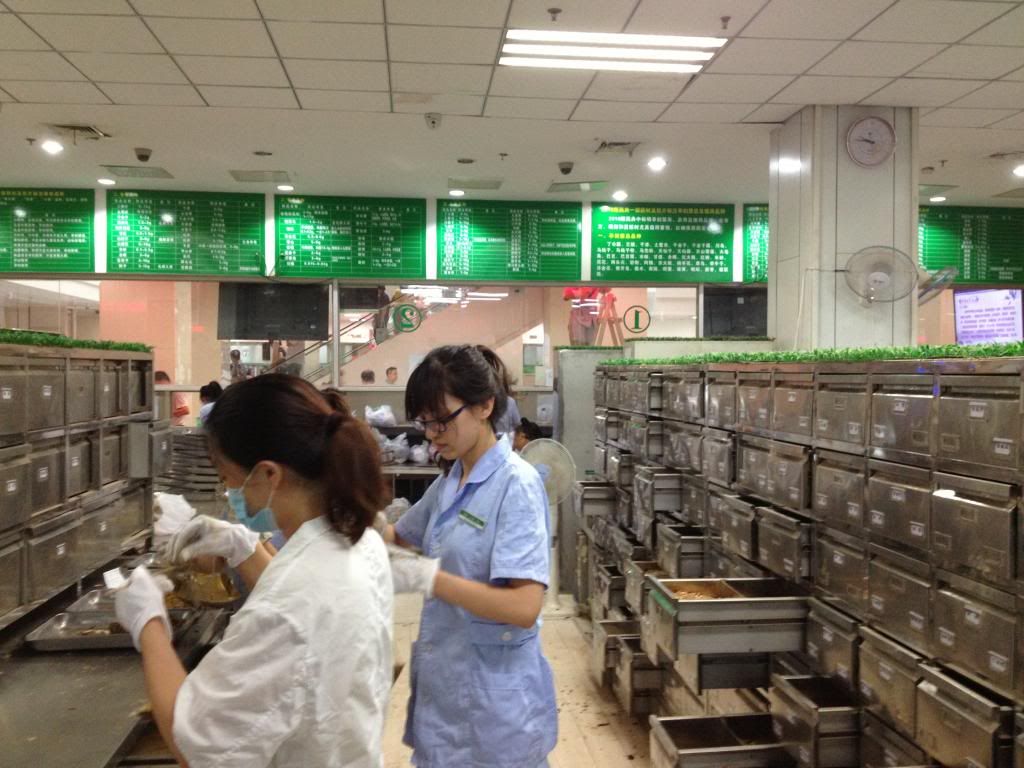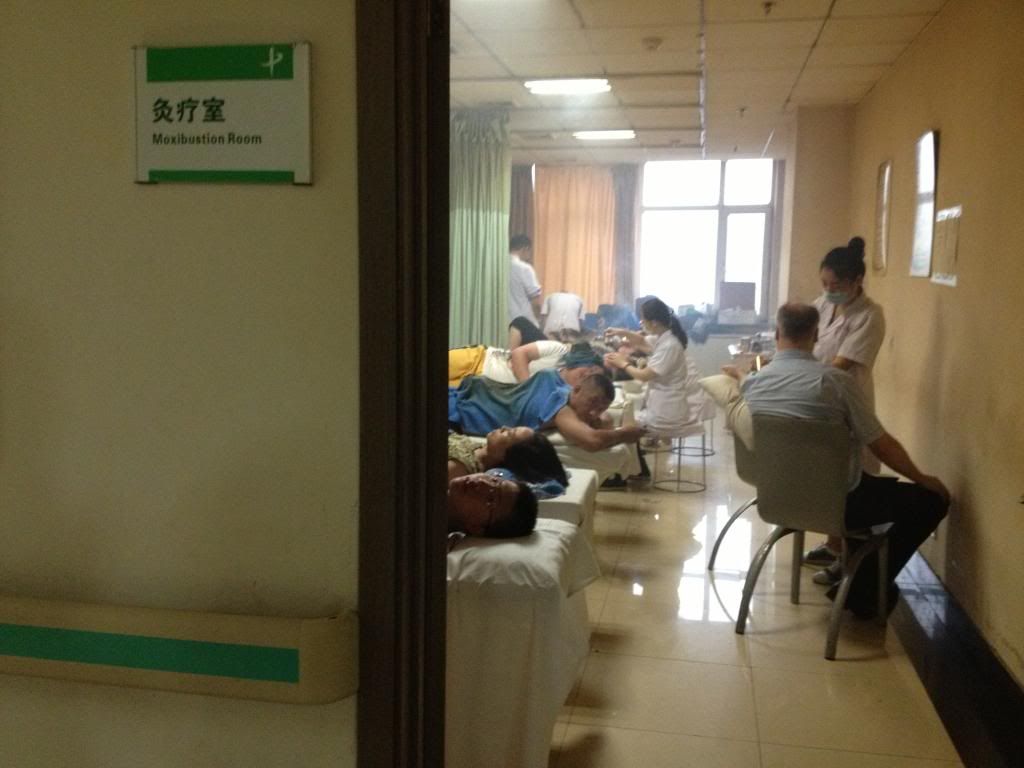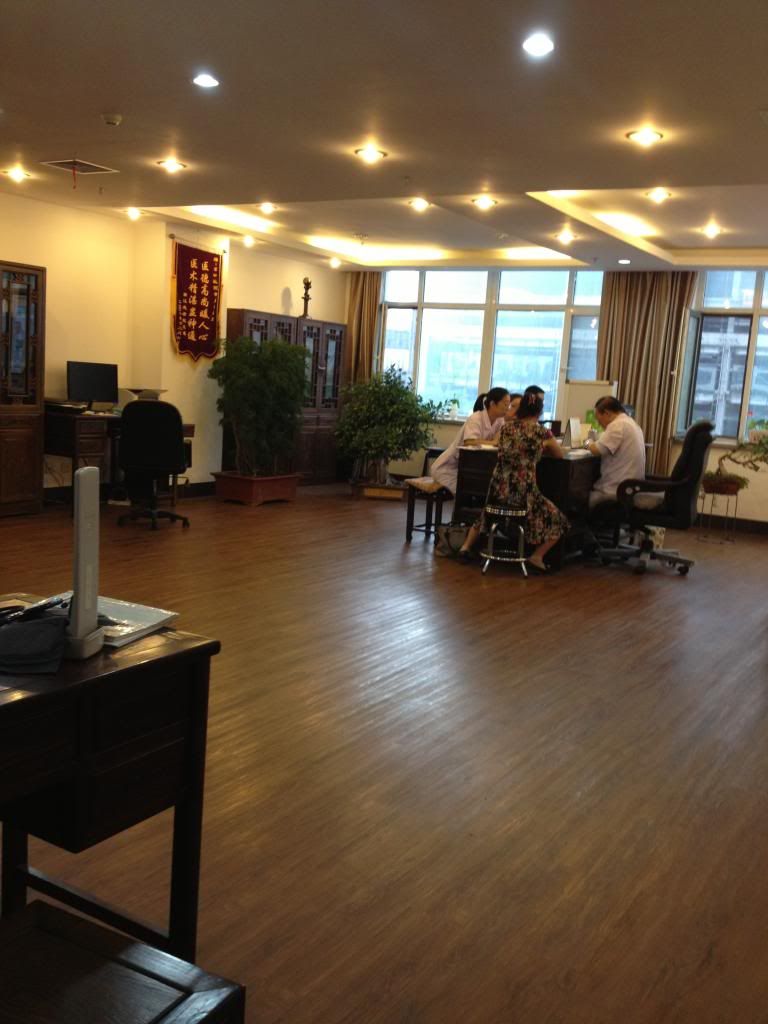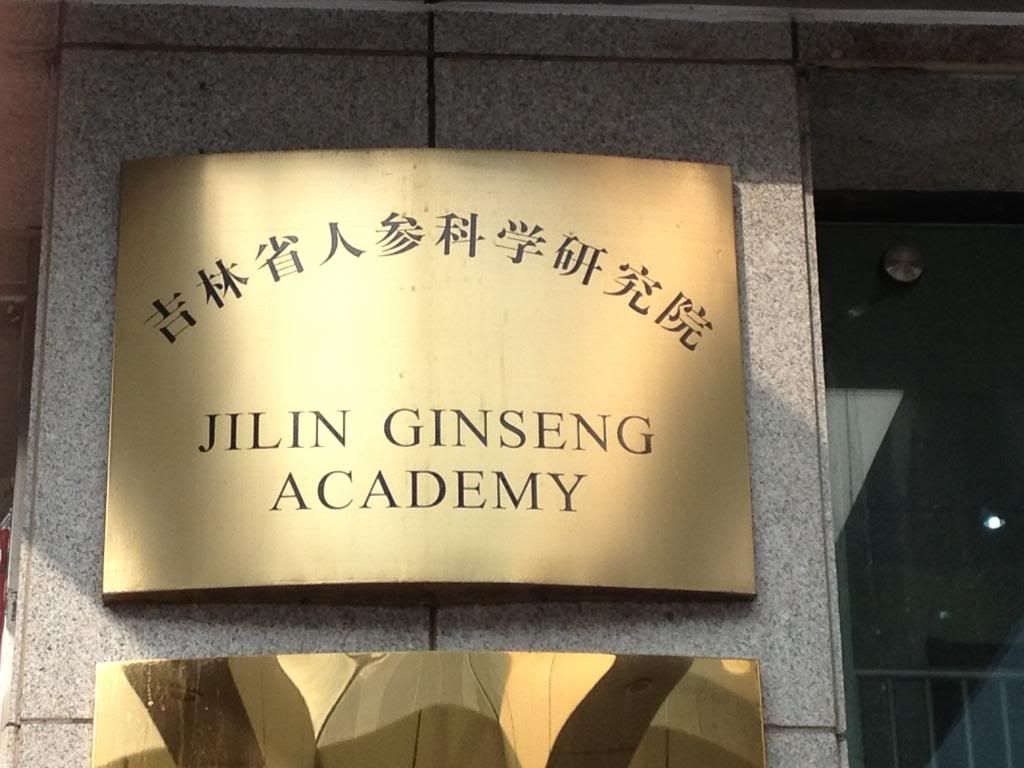Last month we interviewed Holly Chittum, a candidate for an M.S. in Therapeutic Herbalism and winner of the President’s Award for her research poster at this year’s MUIH Research Day for her research on American ginseng cultivation, sustainability and marketability in the U.S. and China. Learn more about the Herbal Programs at MUIH here.
In early August, Chittum traveled to China along with Dr. Eric Burkhart of Penn State’s Shavers Creek Environmental Center and Dr. Liyang Chen, a Chinese-American chemist and ginseng export company co-owner. While there, Chittum met with ginseng scientists and growers, visited ginseng cultivation sites in the Jilin Province, the center of ginseng cultivation in China and gave a presentation at Changchun University.
Below is the travelogue she kept throughout her time in China!
Beijing: first days in China
Our first days in China were dedicated to recouping from jetlag and seeing the sights in Beijing before heading to the Jilin province to meet with some of China’s top ginseng scholars and visit several cultivation sights.
We arrived on August 2nd at 3:30 p.m. After 14 hours in flight and little sleep, I was ready for a meal and to tuck in for the evening, but looking forward to a city tour the following morning.
Our guide Liyang arranged a bus tour for us. What an experience! She booked us for a tour through our hotel to leave at 6 in the morning. The wake up knock came at 4:30 with instructions that we needed to leave immediately! We all scrambled to get ready as fast as possible, were loaded into the car, and driven to the bus pick up point. Here we had some downtime to watch the city wake up. A street vendor was selling hard boiled eggs, soy milk, and warm buns for breakfast. A stray cat was stalking pigeons in front of the building across the street. Citizens began passing by on bike, moped, or in their cars, on their morning commute.
Not considering the language barrier, Liyang had booked us on a Chinese tourist bus with a Chinese speaking tour guide. We were the only westerners and definitely the odd group, but we had a great time all the same.
Our destinations: The Great Wall, Ming Dynasty Tombs, some shopping stops that we were told were significant to Beijing culture, the Ming Dynasty wax museum, and a beautiful old temple.
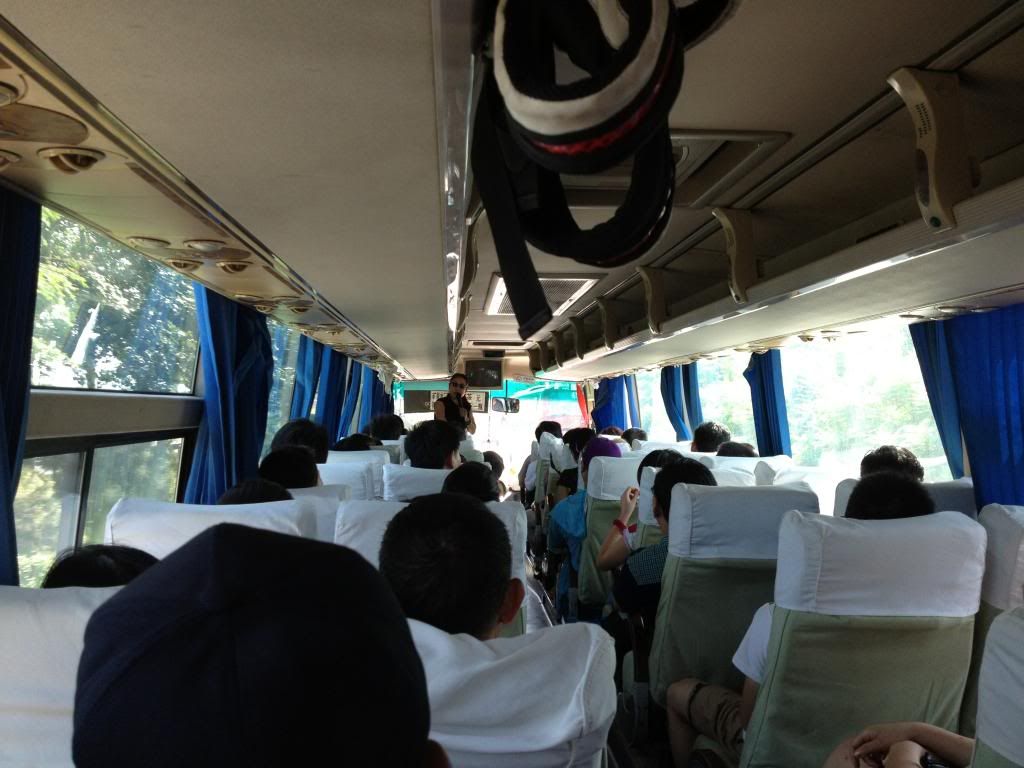 |
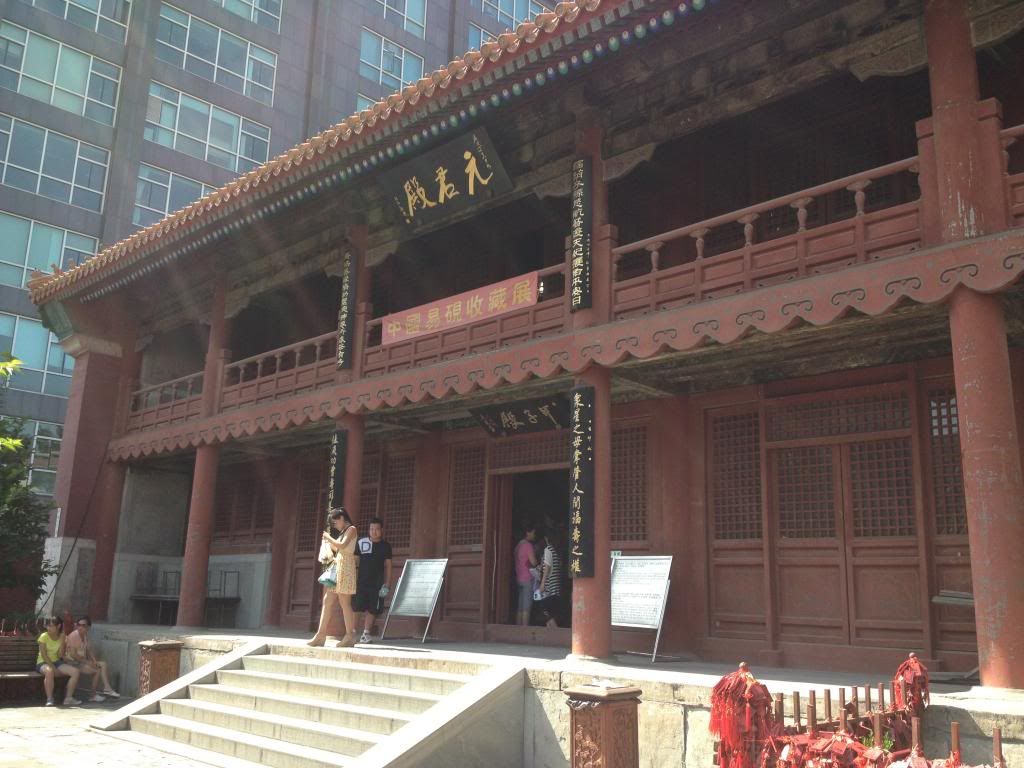 |
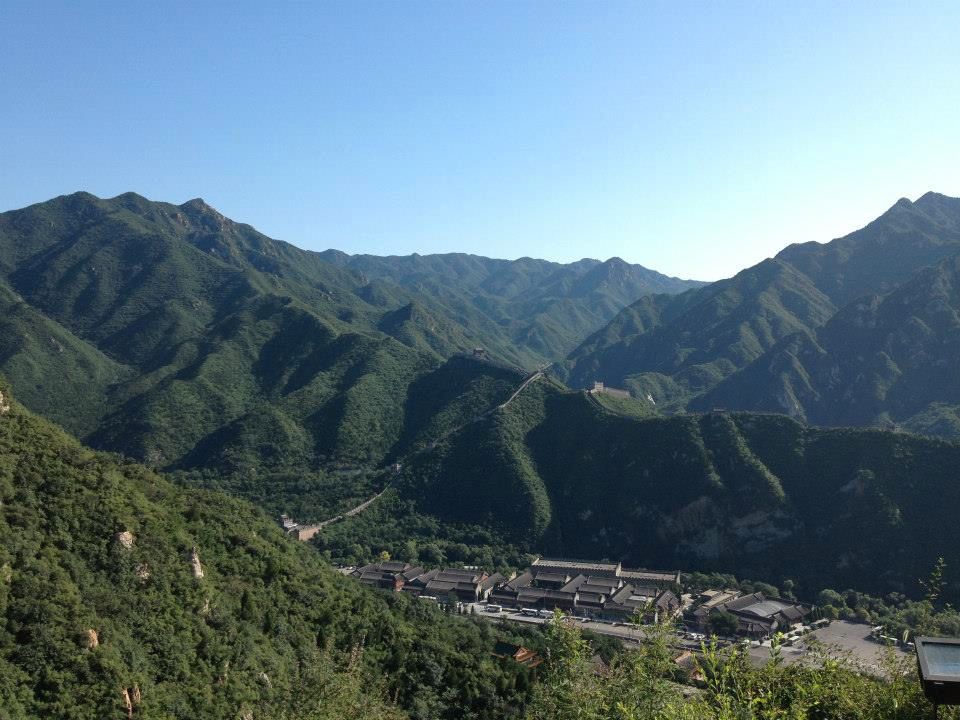 |
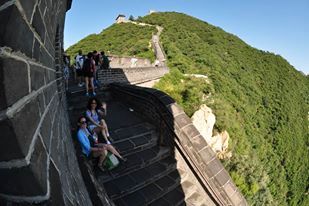 |
On Sunday we visited the famous Temple of Heaven, called Tiantam in Chinese.
We also visited some herbal medicine shops in Beijing’s main high-end shopping district. These bustling medicine shops where nestled in next to high end retailers like Rolex and Cartier, demonstrating the level of value the Chinese place on ginseng and other traditional therapies. Ginseng was always the most prominently displayed item in these shops, clearly held in high regard both as a medicine commodity and a symbol of status and wealth.
Before embarking on the next leg of our journey via overnight train to Changchun, Jilin, we met with Lucy, an American Journalist who had been living in China for more than 15 years. Over a wonderful dinner featuring southern Yunnan Chinese cuisine, she offered an insightful and candid monologue of the life of an expat in China, complete with stories of joy and woe and offerings of advice for our travels. After dinner, Lucy accompanied us on a mad dash to the subway in the pouring rain. We made it to the train station in the nick of time, resembling a bunch of wet cats, soaked from head to toe and very cranky! I wish I had a picture to share. Commence an eleven hour train ride northeast through the Chinese countryside to the Jilin province, home of the Changbai mountain region, most widely known for its long history in the ginseng trade. I slept like a baby the whole way.
Changchun and the Changbai Mountain region:
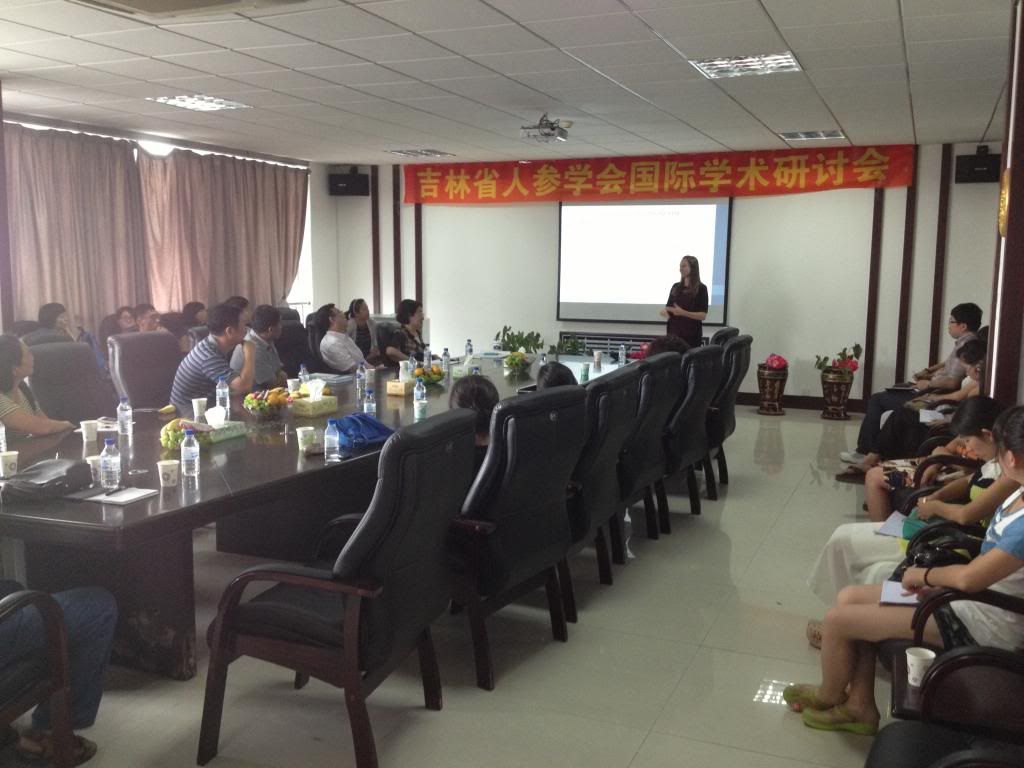 |
| Giving my presentation on U.S. FDA regulations |
The train arrived late at the Changchun station, where we were met by our driver, who rushed us to the hotel to check in and freshen-up, then to the Changchun University’s Jilin Ginseng Institute. Here we were welcomed by Dr. Liu, Director of the Institute, and a large group of scholars and students associated with the Institute. I gave a presentation on U.S. FDA regulations for dietary supplements, including current good manufacturing practices with a focus on quality control and methods for herb identification. This topic is of great interest in China where consumer confidence in the herbal products industry is severely inhibited by quality control issues. Eric gave a presentation on American ginseng production in Pennsylvania. This was eye opening for attendees as well. It seems there is very little knowledge of where American ginseng truly comes from, how/where it is grown or harvested in the U.S., and what the sustainability concerns are.
Later that evening, Professor Liu and company treated us to one of the most delicious meals I have ever experienced. Dinner was served in traditional Chinese fashion, with dishes brought out in succession and set on a “lazy Susan” like spinning glass stand in the center of the table, allowing us to serve ourselves and share all dishes. My favorite part was the unsweetened, fresh pressed corn juice served with the meal.
The next morning we headed to the Asian ginseng planting base called Fusong, in the Changbai Mountain region of the Jilin province, about four hours from Changchun by car. Here we met with growers and production managers, visited sites of both field and forest ginseng production, and spent time over dinner and travel conversing about ginseng and many other things.
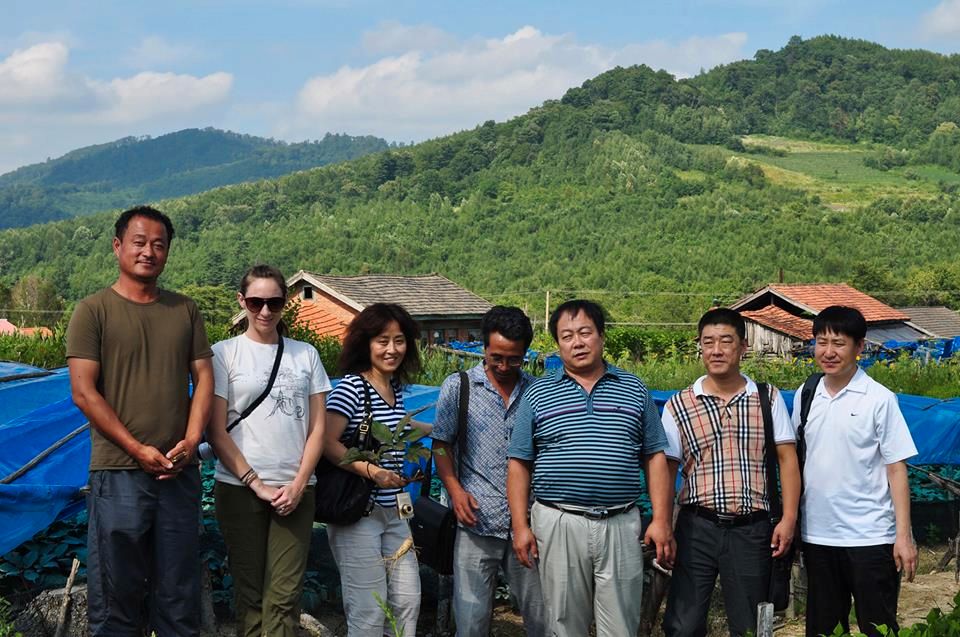 |
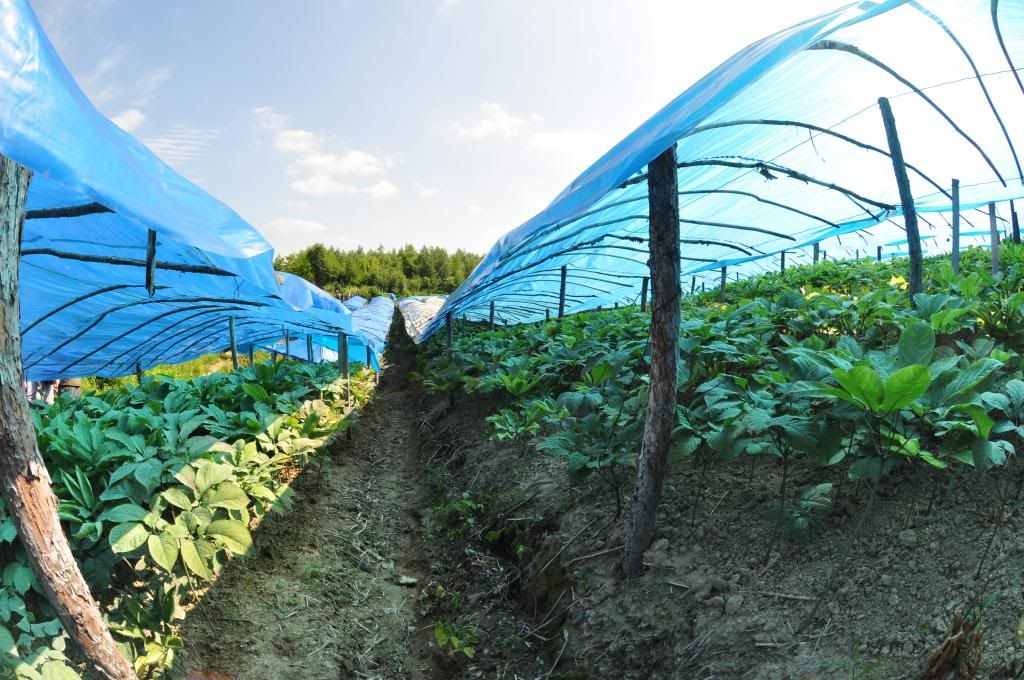 |
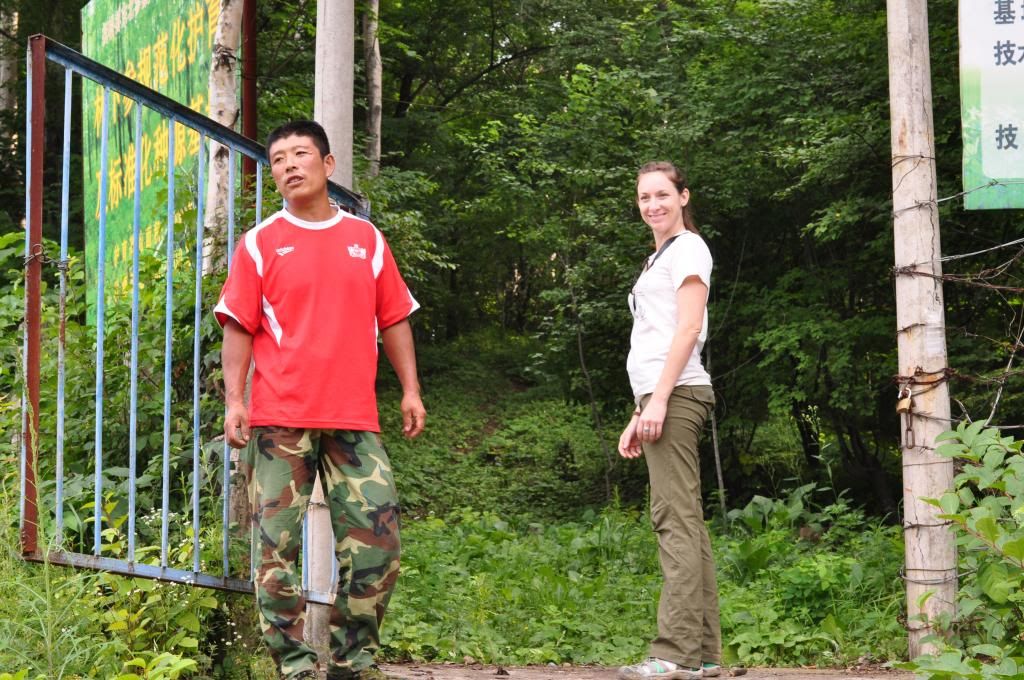 |
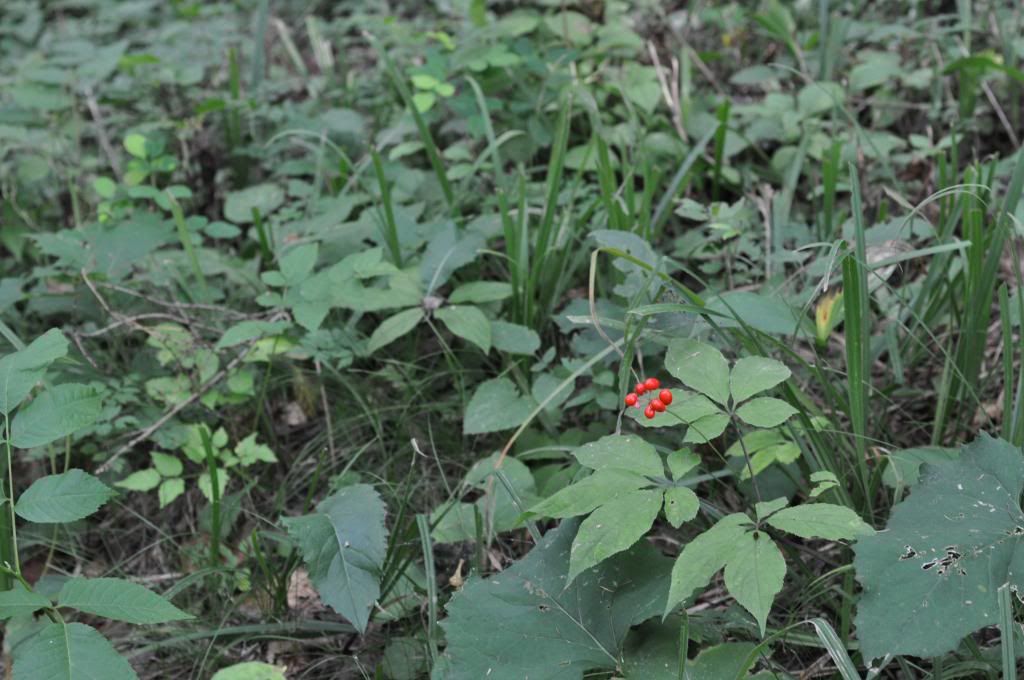 |
| Field cultivation site (top) and wild simulated growing site (bottom). | |
The next day we went to the nearby town of Changbaishan, where we visited several Chinese medicine shops that stocked a wide array of region specific medicinal flora and fauna. It was truly amazing to see so many venues whose sole purpose is to supply natural medicines to retailers and the public. Seeing the bounty on the supply side of the trade bespeaks the value placed on natural/traditional therapies in China and the subsequent high demand of consumers and practitioners as compared with many western nations. It is well known that in traditional Chinese medicine, animal parts are used as well as plants. Stores prominently displayed the antlers and male reproductive organs of deer for use as medicine. In one shop, a woman gave me a demonstration on how to harvest the female reproductive organs of a frog to consume in the winter for good health and to maintain a youthful appearance, a practice for women only. I am not one to be squeamish, but it was certainly a novel experience for me as a westerner!
In the second shop we visited, we happened upon a camera crew filming a documentary on ginseng, to be broadcast during the 2014 spring ginseng festival. Seeing two westerners with an entourage of Chinese academics must have made them quite curious because they asked our guides about us. Upon learning that we were ginseng researchers from America, they asked if we would be willing to be interviewed for the documentary! During the interview they asked us many questions about ginseng in America and about our work with the plant, then we sat down with one of China’s top ginseng experts (who was travelling with the film crew), asked questions and exchanged ideas. Next we were taken upstairs to the private room where all of the very old and expensive ginseng roots are on display for those with the means to afford them. They were an investment indeed. One root was for sale for 23,000,000 Chinese yuan ($3,759,097 US)! It was quite a sight.
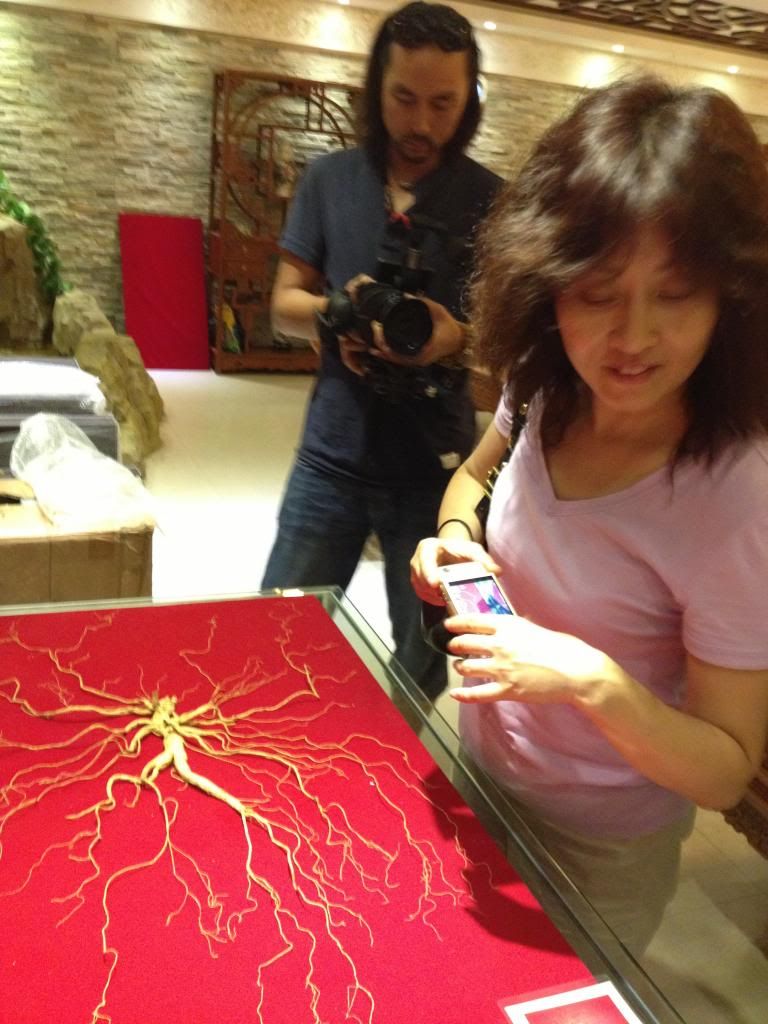 |
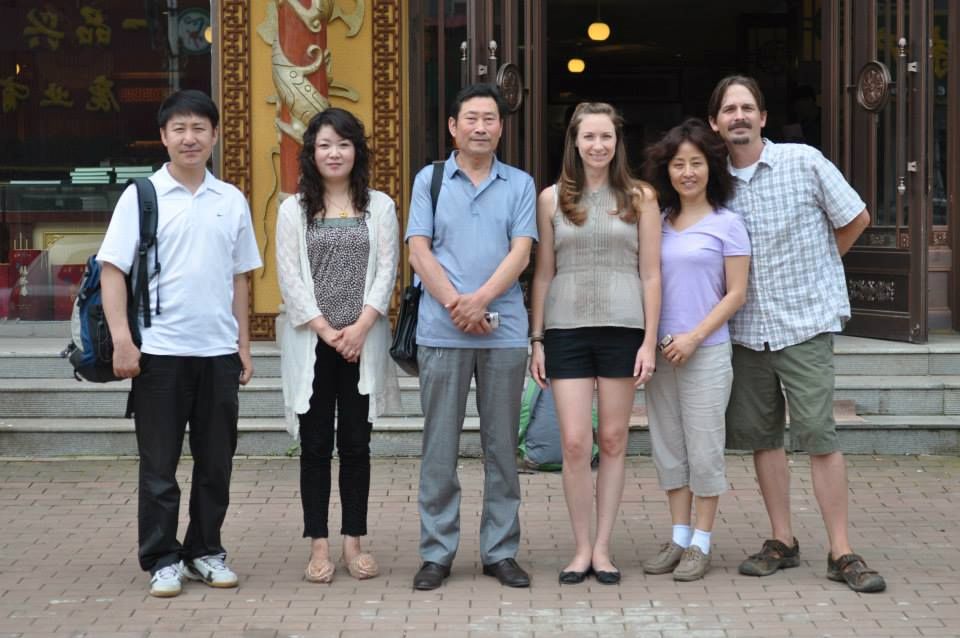 |
| Here we are in the upper room with the film crew and in front of the store with the Chinese ginseng expert (the gentleman in the middle). | |
After the filming was concluded, the shop owners invited us to have lunch with them. They took us (and the film crew) to a local restaurant, where we enjoyed another lovely meal. When the film crew departed, the shop owners drove us to their nearby blueberry farm, where we picked copious amounts of fresh blueberries, then it was back to the shop to share some eleuthero leaf tea and (of course) ginseng root before we got back on the road for the return journey to Changchun.
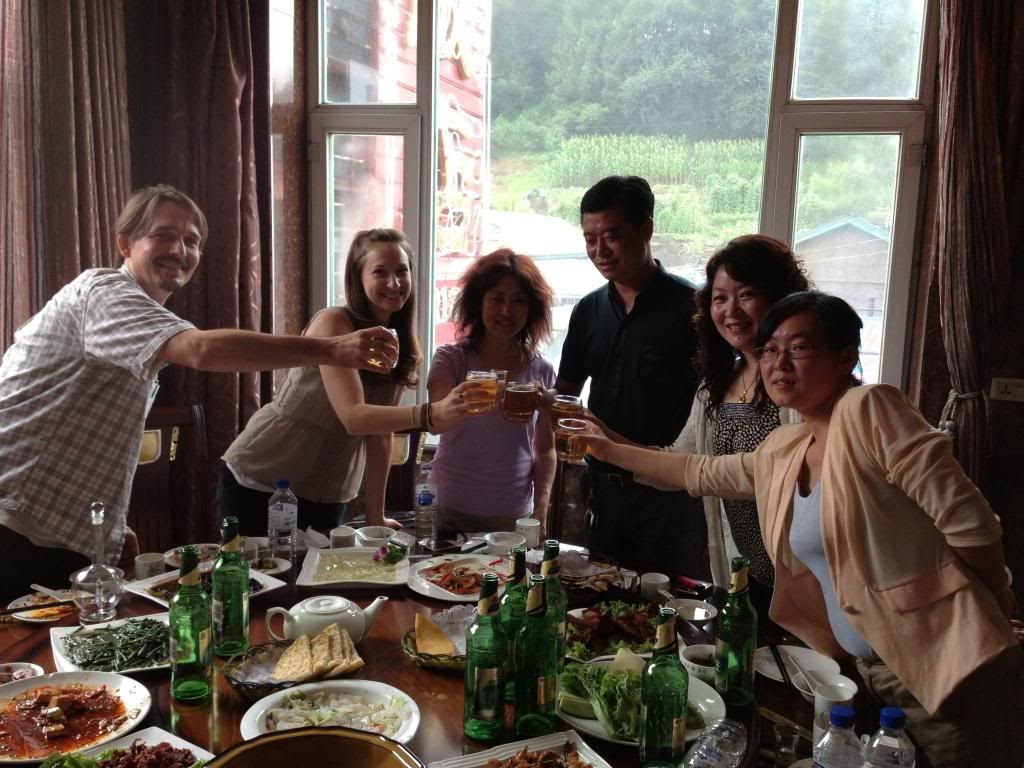 |
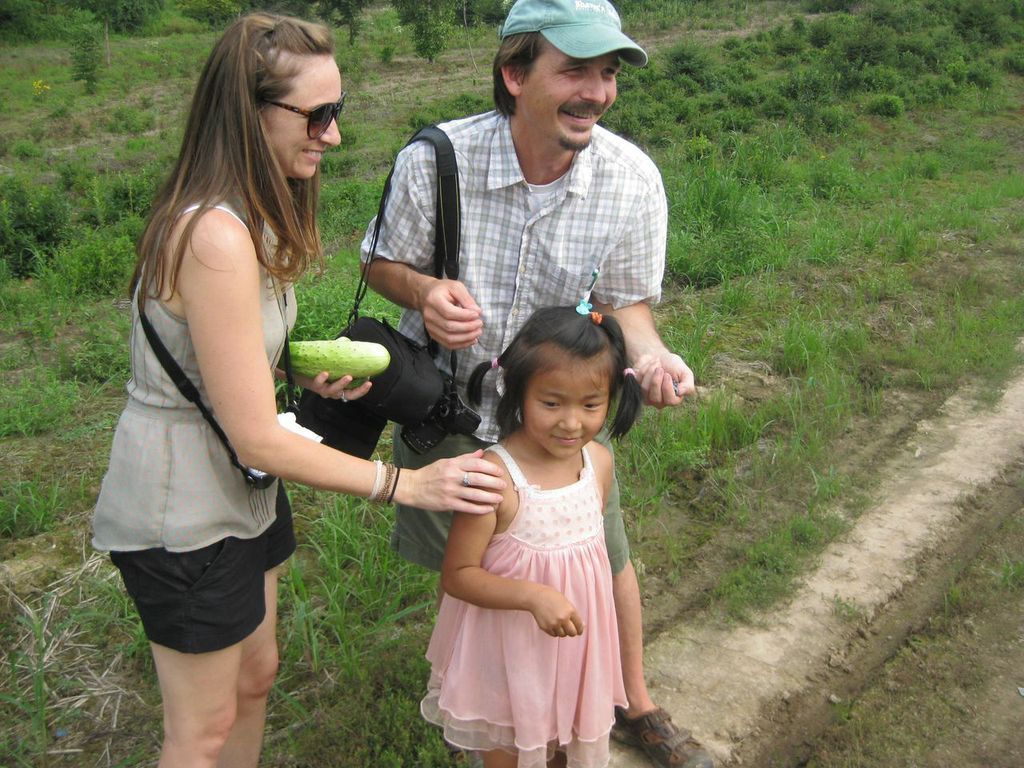 |
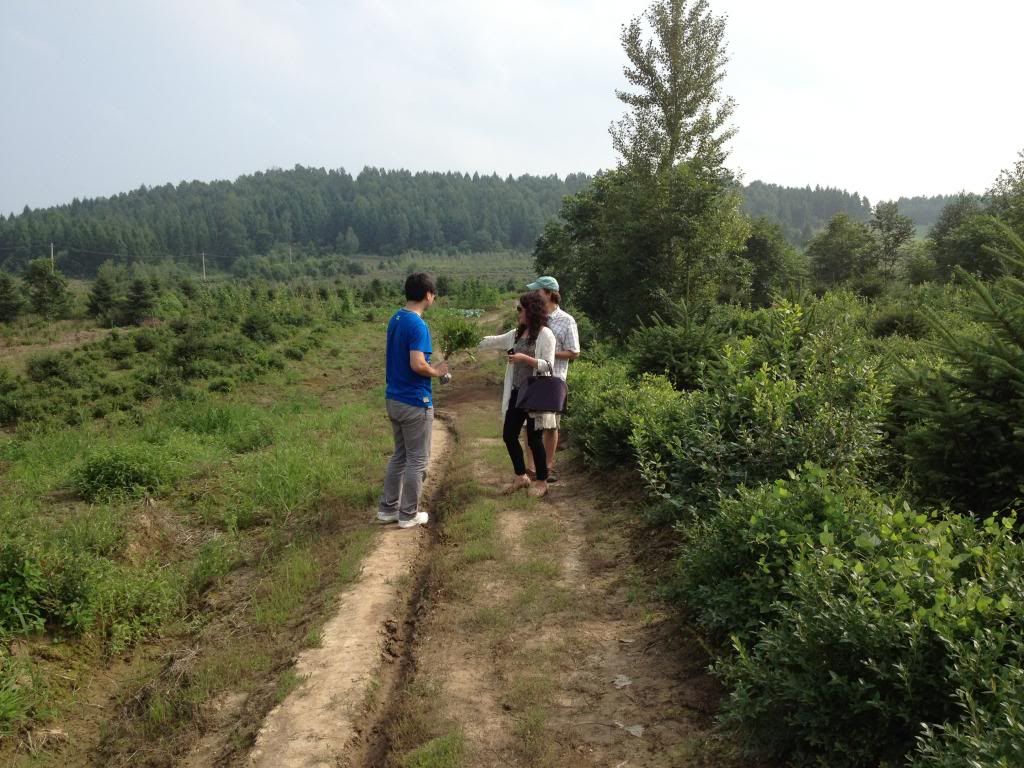 |
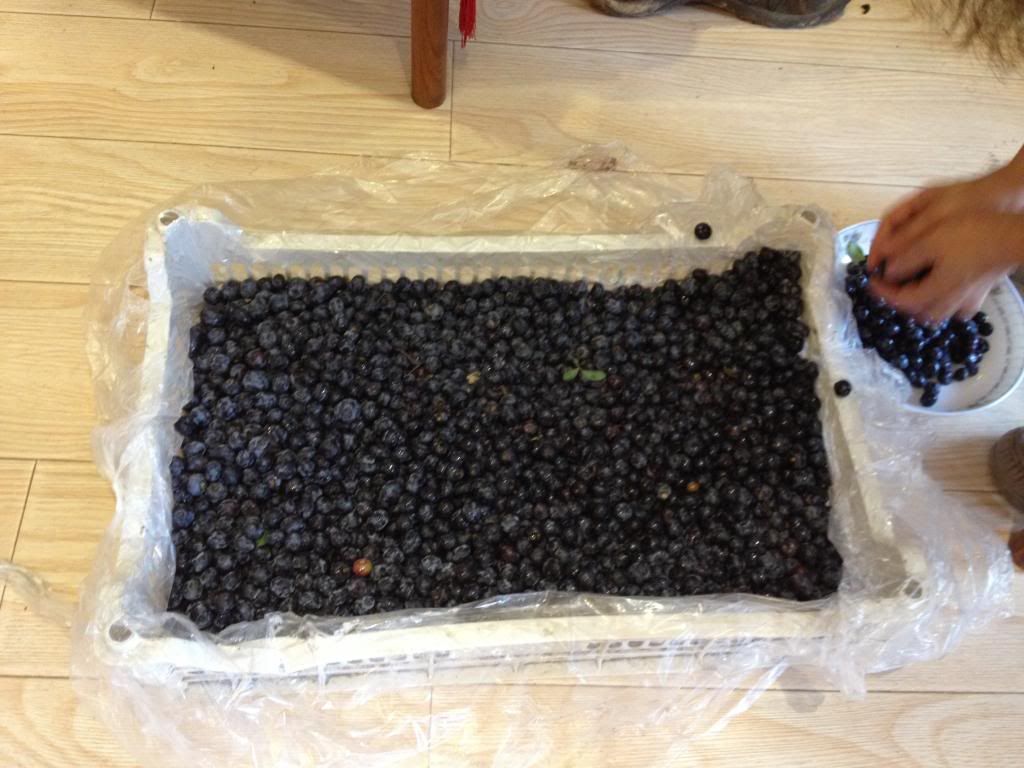 |
| Here are pictures of our outings with the shop owners, including lunch and a visit to their nearby blueberry fields. | |
The Following day we were given a tour of the Changchun Traditional Chinese Medicine University Hospital. A hospital with all the standard departments (i.e. oncology, geriatrics, gastroenterology, etc.), but also including acupuncture, moxibustion, and massage therapy departments, an herb dispensary and “decoction room”, and a special area that housed the highly respected traditional medicine practitioners.
The last stop on our China Journey was a second visit to the Jilin Ginseng institute to meet again with Dr. Liu and discuss possible future collaborative research projects.
It was back to Beijing and a flight home the following day for Eric and me. I could write a novel about our experiences and all of the learning that took place for me on our trip, but to sum up I will say that despite very present and increasingly invasive modern day issues like air and water pollution due to overpopulation and rapid expansion, the Chinese appear to have an innate connection to the earth, its energies, and how to live in harmony with them. This seems to me something that we have lost in western culture and are only beginning to acknowledge and relearn. It was truly inspiring to witness a culture that has been able to “modernize” and “progress” within the realms of science and industry without losing their deep connection to the natural world.
